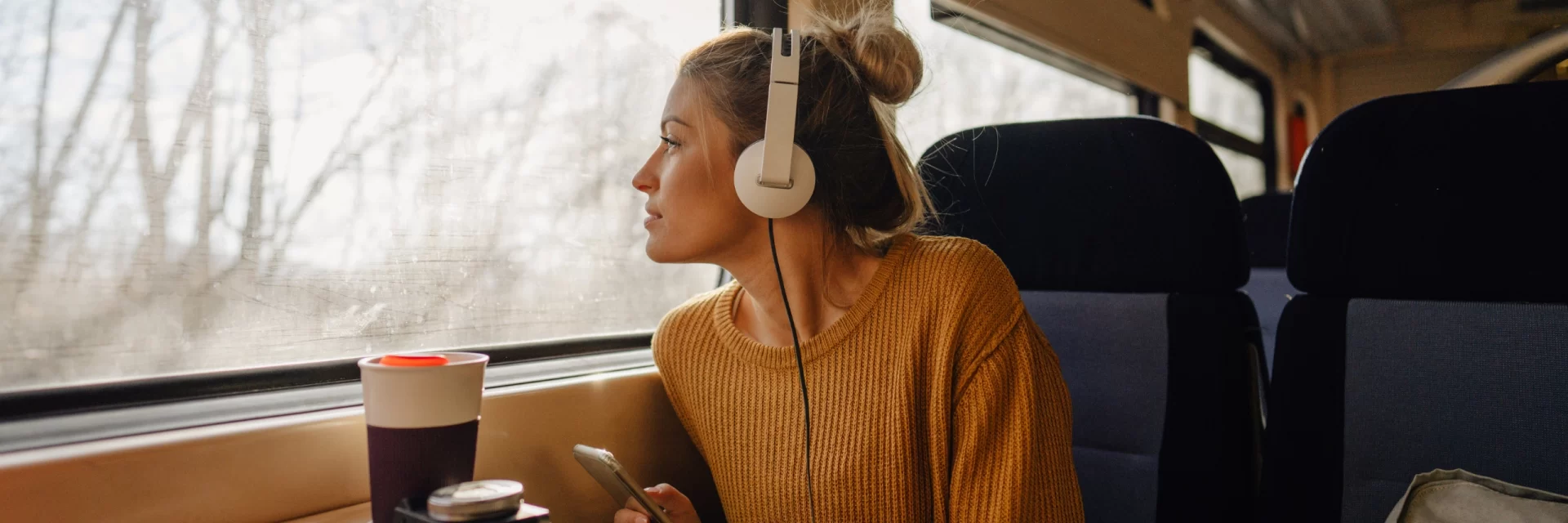
What Exactly is Slow Travel
If you want to better understand what slow travel is, Getaway Well has got you covered. Read our blog and find out what you need to know about slow travel.
Everyone loves to travel. It enriches our lives through food, arts, music, and many other things that travelers encounter on their trips.
Today, travel is more accessible and affordable than ever, but highly curated experiences inexpensive hotels, popular sightseeing tours, and tourist trap destinations seem to be declining in popularity. Especially since the pandemic, travelers worldwide have been slowing down and staying home, which opened the door for a new travel trend called slow travel to begin to take hold.

Now that the world is open to traveling again, the number of people on the move seems to be increasing rapidly. With this increase in the rate of worldwide travel, it seems that travelers are leaning more towards trips that allow them to explore local cultures more deeply. Slow travel can be the ideal way to travel for those who seek to have a more intimate view of the destinations they visit and have more meaningful travel experiences. But the question remains: What is slow travel?
What is Slow Travel?
Just as the name of this trend suggests, slow travel means traveling at a slower pace, staying in the places you visit for a longer time to better experience their culture, food, music, interact first-hand with locals, and establish personal connections rather than letting a tour guide or third party curate the trip.
Slow travel also supports the idea that a trip should be an experience that educates and leaves a positive emotional impact on you and the place you visit while remaining sustainable for the local communities and environment. Traveling this way also highlights the value of supporting the local economy, trying local foods, and even having dinner or lunch with the area’s residents.

Slow travel is about seeking a richer and more meaningful experience on your journey instead of simply having a quick tour of an entire country or city in a short time. It is usually done independently or in small groups, but always in off-the-beaten-path places or away from popular destinations and heavily traveled or touristy areas as it gives you more time to explore. For more information on How to slow travel click on this link.
Who is Slow Travel for?
Slow travel could be for anyone interested in immersing themselves in their destination and experiencing a more meaningful and fulfilling trip. However, this type of travel may fit some lifestyles better than others.
Usually, solo travelers and couples choose slow travel. Also, people with young families and sometimes small groups of friends choose this way of traveling as it allows them to go further and deeper into the area they visit and at the same time enjoy more enriching experiences.
History of Slow travel
Slow travel is a movement that has been around for some time and has evolved over the years. Slow travel is associated with the slow food movement, the start of this movement could be attributed to Carlo Petrini and an activist group in 1980’s Italy.
Petrini protested against the opening of a McDonald’s location that was close in proximity to the Spanish Steps in the city of Rome, under the premise of defending regional traditions, traditional cuisine, and local agriculture.
These movements have increased in popularity over time, thanks in large part to the increased popularity of self-care and sustainability. Currently, and especially after the pandemic, more and more people choose local and opt to slow travel as one of the best ways to interact and understand their destinations.
The art of slow travel has evolved. Each traveler enriches this trend with fulfilling traveling experiences and living unique experiences under this mindset.

3 Slow Travel Myths to Bust Before Your Next Trip
Certain myths or misconceptions related to slow living and slow food have also been associated with slow travel. Especially when people take the name too literally, some might misinterpret the meaning of slow travel and, with this, develop certain myths or misconceptions about what qualifies as slow travel. Three of the most common myths about slow travel to demystify are:
It Means Physically Traveling as Slow as Possible.
In reality, slow travel is not about traveling physically slow or taking too long to move from one place to another. It’s about traveling at the right speed and finding that middle ground between traveling too slow or too fast. Doing slow travel is more a matter of mindset than of literally the time it takes to travel. Instead of rushing, slow travel is actually about pacing and connecting with the place and the people who inhabit it. Take the time to enjoy local foods and culture and go out of your way to discover some things that are not in the guidebook.
It’s Anti-technology
Technology can be a beneficial tool when you travel. Slow travel is not about being against technology. There is a big difference between digital minimalism and being anti-tech. Slow travel, like digital minimalism, only proposes to use technology wisely instead of letting technology use you.

Has to Take at Least a Week
Doing slow travel does not require you to stay in one location for a set amount of time. In reality, you can apply the slow travel mindset even to an afternoon excursion in your city and develop a completely different point of view of the same places you pass daily.
Slow travel is about appreciating details that are usually not noticed when you are in a rush. It is about connecting with places differently and more deeply. You can even practice the principles of slow travel on short trips and apply them to your long trips.
